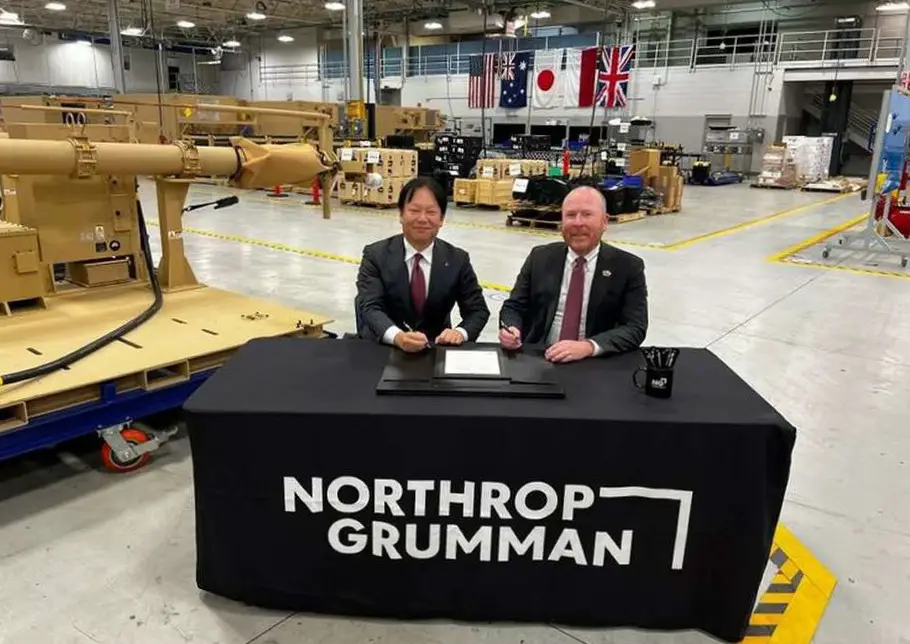Northrop Grumman and Mitsubishi Electric join forces to strengthen Japan's integrated air and missile defense systems
Northrop Grumman and Mitsubishi Electric Corporation have signed a teaming agreement to collaborate on integrated air and missile defense capabilities for Japan’s ground-based systems.
Follow Army Recognition on Google News at this link

Northrop Grumman and Mitsubishi Electric Corporation have signed a teaming agreement to collaborate on integrated air and missile defense capabilities for Japan’s ground-based systems (Picture source: Northrop Grumman/Mitsubishi Electric Corp.)
Rebecca Torzone, vice president and general manager, combat systems and mission readiness, Northrop Grumman: “The Japanese Ministry of Defense (JMOD) is accelerating integrated air and missile defense by prioritizing investments in operationally resilient systems and exploring the advantages of networking systems to facilitate fire control. Today’s agreement with Mitsubishi Electric signifies a renewed collaborative relationship combining Northrop Grumman’s proven integrated air and missile defense capabilities with Japanese defense expertise to accelerate innovation, in alignment with JMOD’s priorities.”
Northrop Grumman’s proven integrated air and missile defense command and control capabilities offer warfighters scale and flexibility to meet the needs of their unique mission. The Integrated Battle Command System, which was developed for and is currently being fielded to the U.S. Army, serves as a fundamental element with its ability to unify current and future assets across the battlespace, regardless of source, service or domain. Through its modular, open and scalable architecture, it gives warfighters capabilities not previously available by fusing sensor data for a single, actionable picture of the full battlespace that enables rapid, informed decisions to optimize shooters.
Japan began developing the Ballistic Missile Defense(BMD) system in FY2004 to be fully prepared for the response against ballistic missile attacks. To date, Japan has steadily built up its own multi-tier defense system against ballistic missile attacks, by such means as installing ballistic missile defense capability to the Aegis-equipped destroyers and deploying the Patriot Advanced Capability-3 (PAC-3).
North Korea is assessed to have already successfully miniaturized nuclear weapons to fit ballistic missile warheads, and it possesses several hundred ballistic missiles capable of reaching Japan. Recently, North Korea is trying to improve its missile technology and attack capabilities, which include a greater range of missiles, simultaneous launch of multiple missiles, precise aiming at targets, surprise attacks, and new missiles that fly at low altitudes to delay detection.
Recently, there have been new threats, including hypersonic weapons designed to break the missile defense network. For example, some countries are adopting the Hypersonic Glide Vehicle (HGV). It is believed that the HGV is generally difficult to intercept by a missile defense system because after being launched by a ballistic missile, it flies at an ultra-high speed and low altitude with high mobility.

Japanese Ballistic Missile Defense System (Picture source: Japanese MoD)
Defense News January 2024
- Hits: 1805
















